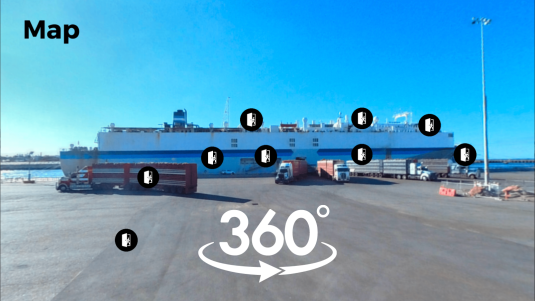Animal Welfare
Australia is a world leader in animal welfare standards, exporting know-how and technical support to improve practices in countries importing Australian livestock.
Overview
Australia is the only country exporting live animals that regulates standards of animal welfare in other countries and invests in training and auditing to ensure those standards are met.
Exporters of cattle, sheep and goats must comply with stringent regulations that very clearly outline the way animals are selected and prepared for export; the amount of space, food and water they receive during voyages; and requirements around animal handling and welfare, and slaughter after they arrive at their destination.
For LiveCorp, animal welfare is the key priority.
Projects and activities related to animal welfare make up around 40% of LiveCorp’s total budget, including a training program for the stock handlers who travel with the livestock on ships.
The Livestock Export Program (LEP), a partnership between LiveCorp and Meat & Livestock Australia (MLA) allocates more than 50% of its research, development and extension (RD&E) budget to animal welfare. The LEP in-market team, based in countries which receive Australian livestock, spends much of its time supporting local workers in feedlots and abattoirs with training materials and advice on animal welfare practices.
Individual livestock exporters are also continually improving practices at all stages of the livestock export process, and providing training and support materials for the companies which take the animals they export.
Improvements on board ships
Traditionally, the regulator has used the mortality rate, or the number of animals that die on their journey to another country, to judge how well a livestock exporter is performing. There are moves to measure animal welfare instead, but this is much harder to define and regulate.
There has been a substantial improvement in the successful delivery of cattle, sheep and goats from voyages at sea over time, as shown in the graph below. Exports by air have traditionally been very safe, with failures in aircraft systems being the main cause of any issues.
Reports must be provided to the regulator at the end of every journey, whether by sea or air, and if the deaths exceed certain limits an investigation is carried out. Once completed, the findings are published on the Department of Agriculture, Fisheries and Forestry website, including any conditions placed on the exporter to improve future shipments.
The improvements over time are a result of many factors, including changing technology on the ships, continual improvements in management practices, exporters adopting the results of research and development carried out by LiveCorp and the LEP, and changes to regulation.
Research carried out for the LEP by Mecardo found that changes to regulations and management practices for the export of sheep meant that mortality rates in the first half of 2019 were 54% below the seasonal average for the period 2013 to 2017. The graph below shows this continues the trend of successful deliveries from recent years.

Live export ship tour
The voyage from Australia to overseas destinations is part of the supply chain that LiveCorp knows the Australian community has questions about. A virtual ship tour has been created, which sheds more light on the management of livestock on board and hopefully provides some answers.
The website provides the opportunity to look around the pens holding sheep and cattle via 360 degree videos. It also includes access to other parts of the ships, with links to videos and other resources providing a wealth of information.

Improvements in our markets
The introduction of the Exporter Supply Chain Assurance Scheme (ESCAS) in 2011 created a significant change in animal welfare in countries that received Australian livestock.
Individual exporters already had programs in place overseas to educate companies and their workers in animal welfare and handling practices, and LiveCorp was working on a quality assurance (QA) program to bring some consistency to their efforts.
Following a media expose about poor slaughter practices, the trade to Indonesia was suspended while the regulator took the draft QA system and developed it into ESCAS, which was then rolled out to every market. LiveCorp and the LEP developed a range of instruction manuals and training materials covering the new requirements for animal handling and slaughter practices, and the LEP in-market team focused on supporting exporters and their business partners with the implementation of ESCAS.
In Australia’s biggest market, Indonesia, these days there are Animal Welfare Officers (AWOs) employed directly by feedlots and abattoirs who provide in-house training for new employees and make sure the company meets all the requirements of ESCAS.
One of the unintended benefits of ESCAS has been a change in the way countries that receive Australian livestock do business. The requirement for feedlots and abattoirs to be approved and audited has led to fewer but larger operations, a move away from simply buying and selling animals, and investment in infrastructure and training. This has a flow-on effect to local animals and those imported from other countries. In recent years, some overseas governments have introduced their own legislation, with ESCAS providing an operational regulatory system to underpin the legislation.
Frequently asked questions about welfare
Animal welfare is fundamental to the operation of the livestock export trade. However, there are many aspects of the industry that people don't realise.
Below are some of the questions we get about how the livestock export industry operates. Click on the link to read the answers.
What food and water do cattle and sheep get on live export ships?
I see cattle and sheep on trucks – is it like that on live export ships?
What does the industry’s Vet Handbook say about heat stress thresholds?
How long does it take livestock to reach different countries?
What is the difference between a short haul and long haul voyage?